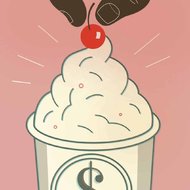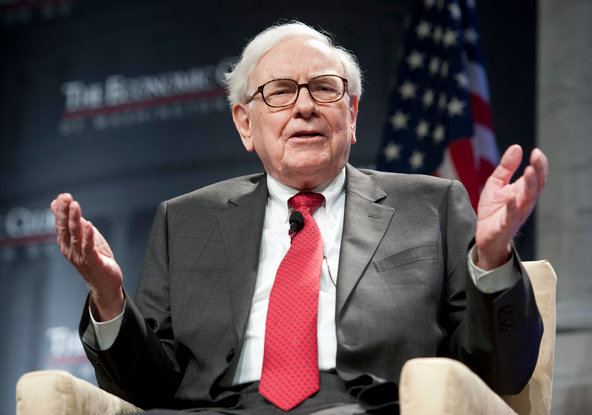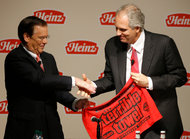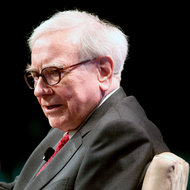 Harry Campbell
Harry Campbell
Acquisitions usually come with a nice premium for the seller. But when Warren E. Buffett is the buyer, there is typically something of a discount.
The ability to make acquisitions on favorable terms is a testament to Mr. Buffett’s personality and skills as a deal maker. It also highlights an almost unsolvable problem for his company, Berkshire Hathaway, and its shareholders. When its 82-year-old chief executive is gone, who will negotiate such sweet deals?
A case in point is the $28 billion buyout of the H.J. Heinz Company by Berkshire Hathaway and a partner, the investment firm 3G Capital. The deal, announced in February, is expected to be completed by the end of the summer.
Deal Professor
View all posts
Heinz had three investment bankers to advise it: Centerview Partners, Bank of America Merrill Lynch and Moelis Company. Going through Heinz’s disclosure of the bankers’ analysis, it is pretty clear that Berkshire and 3G did not pay top dollar.
Berkshire Hathaway and 3G are paying a 19.1 percent premium over the closing price of Heinz shares the day before the acquisition was announced. This is below the average premium of 31 percent in the industry that Heinz’s own investment banking firm Centerview Partners used to determine the fairness of the transaction.
The two buyers are also paying a multiple of 11.9 times the last 12 months of Heinz’s earnings before interest, taxes, depreciation and amortization, or Ebitda. This compares with a range of 8.8 to 15.6 times, the ratio paid in comparable acquisitions of food companies disclosed by Bank of America Merrill Lynch.
The bottom line is that the bankers’ disclosure shows that the amount that 3G and Berkshire paid was below that of many other deals in the food industry.
The two buyers did not pay top dollar, but they did pay a fair price for Heinz and are certainly not paying as low a multiple as in other deals, like Kohlberg Kravis Roberts’s $5.3 billion acquisition of Del Monte Foods in 2010, which had a multiple of almost nine times.
Where it gets really tasty, though, are the terms that Berkshire negotiated for its own investment. In addition to putting up half the equity with 3G, or $4.12 billion each, Berkshire made an $8 billion investment for preferred stock.
And boy, is that preferred stock investment on good terms. It pays 9 percent interest, and has a redemption feature at “at a significant premium price,” according to Mr. Buffett.
This gives real downside protection to Berkshire for the investment. Not only that, but in exchange for the preferred investment, Berkshire was also issued warrants to buy 5 percent of Heinz for a “nominal” price, or in other words, pennies.
Mr. Buffett is getting 55 percent of Heinz plus an interest payment of $700 million a year. This is an extraordinarily good deal.
To see why, you need only to look at the terms of the rest of the financing. Heinz is taking on $14.1 billion in additional debt to help finance this deal. The debt takes several forms, and one part of it is $3.1 billion of high-yield notes at a 4.25 percent interest rate.
This yield is extraordinarily low, given that high-yield debt is ordinarily in the double digits. But this is no ordinary time, and despite the low yield, the issue was more than three times oversubscribed.
In this light, the relatively high 9 percent payment on the preferred stock investment plus its bonus features seem out of whack. 3G could have found cheaper financing by a few percentage points lower than it will pay on the preferred investment, even though Heinz will be laden with debt. The higher rate on the preferred investment will translate into a couple hundred million dollars more each year for Berkshire Hathaway.
As for Berkshire, it just sold five-year debt yielding a measly 1.3 percent. Basically, Berkshire’s financing costs for its preferred investment are most likely around 1 percent, meaning that it is earning in the double digits on the preferred investment. Then there is the upside on the $4 billion equity investment.
The Heinz deal aptly illustrates the huge issue looming for Berkshire shareholders. Simply put, Mr. Buffett negotiated a deal almost no one else on the planet could have received.
If this deal was better for Berkshire than 3G, you may ask why 3G would agree to it. I suspect that it is really paying to be associated with the Oracle of Omaha and his magic. Mr. Buffett has a unique ability to not only score a low acquisition price, but he can scare off competitors and attract other investors. Boards of target companies also appear to run into his grasp.
Heinz is again a good example. According to Heinz, 3G and Berkshire Hathaway made a first bid at $70 a share and then after one round of bargaining raised their bid to a best and final offer of $72.50 a share. That was it. Heinz accepted the bid without speaking to any other parties.
The reason that Heinz gave for failing to look for other bidders was that its investment bankers informed the Heinz board that “strategic acquirers” were unlikely.
Moreover, these bankers also told the board that if Heinz did solicit “alternative acquisition proposals,” 3G and Berkshire Hathaway were likely to withdraw their proposal.
In other words, Heinz’s board decided to deal only with Berkshire. And when Heinz requested the chance to solicit other bidders after announcement of the deal, through a so-called go-shop period, Berkshire and 3G said no.
Heinz and 3G declined to comment on the deal. Berkshire did not respond to a request for comment.
The Heinz board’s quick acquiescence is not unusual for Buffett deals. In Berkshire’s $9 billion acquisition of Lubrizol and $26.5 billion acquisition of Burlington Northern, neither board appeared to negotiate particularly hard. In Lubrizol’s case, its board accepted Mr. Buffett’s first bid of $135 a share. In Burlington Northern’s case, the board accepted Mr. Buffett’s first bid of $100 a share after he said that was all he could pay. The Heinz shareholders are lucky their board held out for at least one raise.
When it comes to Mr. Buffett, boards roll over. According to a draft paper by Shane Corwin, Matt Cain and myself, the median number of bidding rounds in public deals from 2006 to 2011 was four, and only 16 percent of bidders made a best and final offer.
Mr. Buffett is thus an outlier in that he will not raise a bid significantly from his first or contemplate target companies speaking to other possible buyers. But unlike other bidders, boards do not push back with Mr. Buffett.
Only someone with his magic touch could do this. Boards, buyers and everyone else want to be associated with Mr. Buffett. This is perhaps why he was also able to work his magic on 3G, getting a financing co-partner deal that others couldn’t.
As for competing bidders, they too appear to be unwilling to challenge him. In Heinz’s case, Mr. Buffett not only got a better deal with his partner, he may have saved a few dollars a share in the total price paid. It all adds up over time.
Heinz’s shareholders don’t appear to be complaining about the possible loss of a few dollars a share. Happy to get a premium, they approved the deal, a transaction recommended by the proxy advisory services.
The question really is what happens once Mr. Buffett isn’t around. Berkshire will still be a gigantic company with a lot of cash, but there are other companies out there of the same ilk. It all means that unless Berkshire can find another Warren Buffett, it may find its returns just aren’t as good.
Even though Mr. Buffett has hired and groomed other executives, he is a true star, and he cannot just create or transmit those qualities, which are the very ones that get those great deals. Unfortunately, there is only one Oracle of Omaha.
Article source: http://dealbook.nytimes.com/2013/05/21/buffett-with-his-magic-touch-may-be-irreplaceable/?partner=rss&emc=rss






